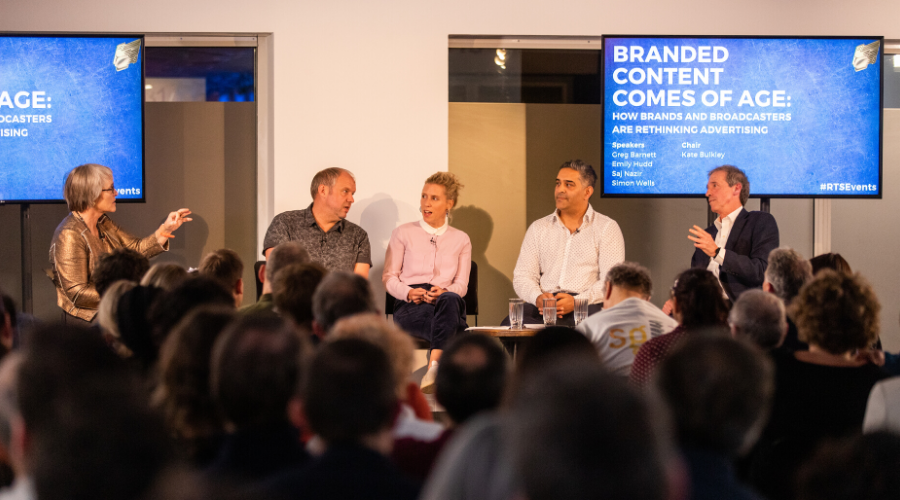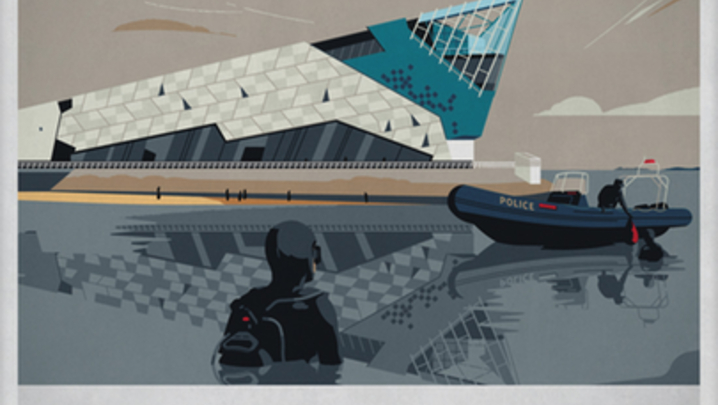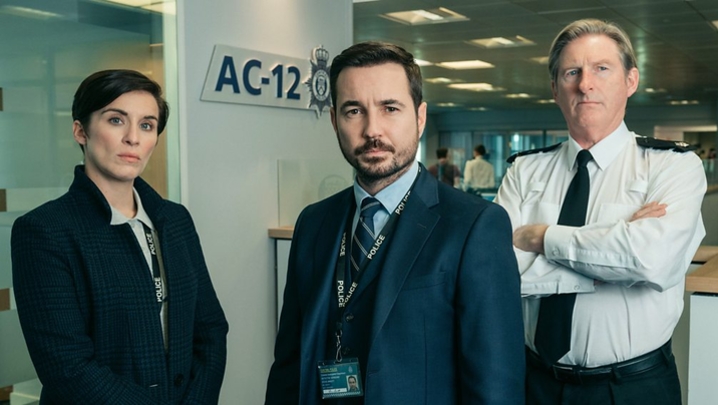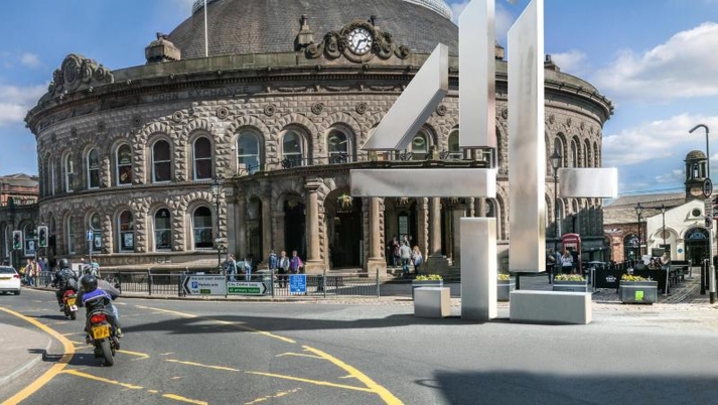Advertisers are increasingly stepping in to close the funding gap, discovers Matthew Bell at an RTS early-evening event
With programme budgets under pressure, TV is turning to advertisers to fund shows directly. And the amounts that brands can bring to the table are significant – anything up to half a million pounds for an hour of TV.
This was the message from a packed RTS early-evening event in October, at which a panel of leading commissioners, producers and advertising experts discussed how they make branded programming.
Greg Barnett, long-serving commissioning editor for factual entertainment at Channel 5, argued that the way programmes are being made is changing. His channel’s brand-funded Britain by Bike with Larry & George Lamb is supported by pain-relief brand Voltarol, and offers a synergy between programme subject and advertiser – the aches and pains caused by cycling.

(Credit: Paul Hampartsoumian)
But, said Barnett, the broadcaster is in charge. “The idea started with the broadcaster, so we retain editorial control,” he explained.
Saj Nazir, head of integrated delivery at “next generation” media agency Wavemaker, argued that, for a brand, funding a programme “isn’t about selling more products – it’s potentially a way for you to own a conversation around a topic, without having to outspend your competitors”.
Simon Wells, controller of funded content and creative solutions at Channel 4, suggested that audiences now “accept” branded content on TV: “Every other platform is full of it.”
Channel 4, he revealed, had “an ambition to make prime-time entertainment with brands. The important thing to say is that we do the editorial but we are really happy for the brand to fill its boots with the assets around that show, with the extra content on social [media], advertising.…
“If you make an entertainment show with us, you can then take those assets… and create advertising, work with the talent.”
For brands, the attraction of funding entertainment shows is that “it’s a great way to engage audiences emotionally”, he added.
And brand funding can do much more than fill holes in budgets. “We are talking about shows [with] £2m-plus brand investment,” said Wells. “A lot of the time, we do bring some money to the party – [but] not always.”
Nazir noted: “It’s such a wide scale: I’ve had brands fund shows for £150,000 an hour and then I’ve had brands fund shows for close to half a million pounds an hour, so it really depends on the talent.”
Using TV talent in brand-funded programming is relatively new, said Emily Hudd, joint MD of entertainment and comedy indie Rumpus Media. “Some people are a bit tentative about it, she conceded. “We work a lot with comedians. We’ll meet them and talk them through the idea first, then explain and reassure them about what the brand involvement is.”
When looking at potential talent, the producers of branded-content look, first and foremost, for the “reach” of a person, whether that’s on social media or traditional TV.
“Most talent I’m finding nowadays are going, ‘I’ll do it because I know that show won’t happen unless brand X [pays for it]. And as long as I’m not asked to say brand X is great,’” said Wells.
But the Channel 4 executive added that, if the talent does endorse brand X, “there will be more money involved”. “The option exists, if you want a deeper relationship, and you want the [talent] to be in your ads straight after the show, during the commercial break, you can [have that]. And this won’t be at an editorial rate – it [will be higher], more of an advertising rate.”
Rumpus is making a documentary for MTV UK that is ad-funded by Timberland, a supporter of the charity National Park City Foundation. It features UK hip-hop artist Loyle Carner, who highlights “urban greening” projects – a subject close to his heart – in Croydon, south London.
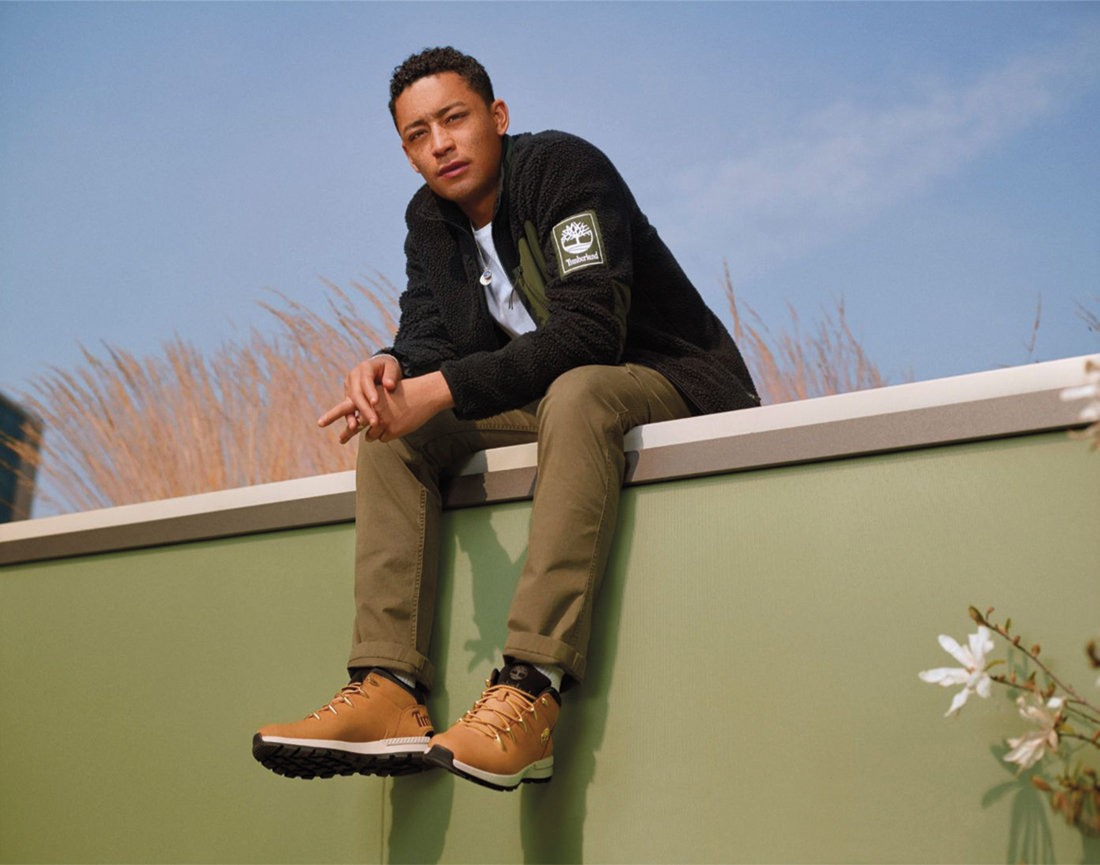
In addition to the MTV show, content will be distributed across VoD, digital and social platforms.
“It’s the first time we’ve used talent in a documentary space – normally, it’s formatted entertainment,” said Hudd. “The branded part of it feels much more minimal in the way that it is executed. It’s not a piece of content about its clothes, it’s about [Timberland’s] values.”
Subtlety is key, she argued, adding that the aim is to “stealthily weave in the message of the brand”.
Wells agreed: “Not every advertiser wants to be in your face – sometimes it’s too much and the audience will know. I think that audiences are very sophisticated now.”
Technological advances are giving impetus to brand-funded programming, argued Nazir.
He identified “dual screening” – watching a show on TV while interacting on their mobile – as a “great way for brands to create really good content that people can browse and share [on social media]”.
He added: “Making engaging content is great but we need to engage our audiences via algorithms, so we make sure that any additional content that we make is topical and trending while that programme is on, so the right people see the content at the right time.”
Digital product placement is used in Australian soap Neighbours. This allows a product well known in one territory to be dropped into, say, a billboard featured in the programme.
“This is a classic example of how content that isn’t made in the UK can still provide opportunities for UK clients,” said Channel 5’s Barnett.
As Neighbours is shown around the world, it offered “a global opportunity for local brands to capitalise on”.
There are limits, however, as set out by media regulator Ofcom in its code, that rein in advertiser-funded programming in the UK.
These cover undue prominence of products, editorial justification and promotion.
At his media agency, said Nazir, “one of the first things we do with brands… is sit them down and take them through the Ofcom code”.
“Don’t be frightened of them,” said Wells. “It’s really important [to push] these regulations, because they are a bit outdated, frankly. This is 2019.”
Barnett added: “We’re a lot more savvy now – across the board. We’ve probably all had our fingers burned, but it’s because of this that we are where we are now. There’s greater understanding.”
‘Branded content comes of age: How brands and broadcasters are rethinking advertising’ was an RTS early-evening event held at H Club London on 21 October. It was chaired by journalist and media commentator Kate Bulkley, and produced by Vicky Fairclough and David Amodio.

